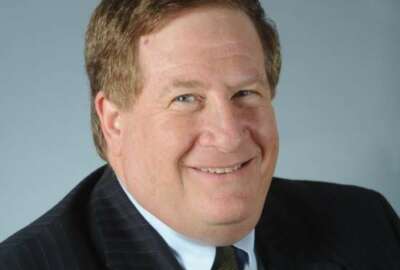
Contract awards in the intelligence community have slowed
Federal contractors have sensed a certain sluggishness in the government's pace of awarding contracts during the pandemic. Now, a review of this phenomenon find...
Best listening experience is on Chrome, Firefox or Safari. Subscribe to Federal Drive’s daily audio interviews on Apple Podcasts or PodcastOne.
Federal contractors have sensed a certain sluggishness in the government’s pace of awarding contracts during the pandemic. Now, a review of this phenomenon finds it’s more pronounced in the intelligence community. Howard Weitzner, Accenture managing director and the chair of the Acquisition Management Council at the Intelligence and National Security Alliance, joined Federal Drive with Tom Temin for more on this slowdown.
Interview transcript:
Tom Temin: Howard, good to have you back.
Howard Weitzner: Thanks for the conversation. Look forward to it.
Tom Temin: So how did you quantify that there’s a sluggishness or fewer contracts coming this year from the IC? Did you count them?
Howard Weitzner: We brought together a group of industry leaders. This was early May so right in the peak of when everyone was adapting and peak of the slowdown, and looked across the community to say not just what are we seeing across the board, but what differences are we seeing within agencies and what differences are we seeing in terms of different types of programs? Then that led to some commonalities. And then we looked at contrasts between what was in the IC and what we might see within our respective companies across the rest of the federal government.
Tom Temin: Got it. And so there are fewer contracts being awarded out of the IC during this pandemic period. Why is that, did you find?
Howard Weitzner: Yeah, I would say that was certainly the case in the early May timeframe, when these observations were identified. The good news story is that the situation has largely stabilized. We’ve gotten back to more of a, what I will call a new normal – not business as usual, but a new normal and to answer your question, Tom, there a couple contributing factors towards why that occurred. And I put it in two categories: Cultural and structural. You have to remember that within the intelligence community, due to security classification requirements, telework was not the norm as you might see in some other agencies. Right, even within the Department of Defense, which is more geographically dispersed, for years they’ve had to do some more things remotely, just to bring people together and collaborate. Within the intelligence community that has not been the case. So there was a familiarity and adjustment that needed to be made. Layer on to that some structural challenges. They didn’t have the tools and processes in place to work remotely. They hadn’t needed them. And so that period took some time. I’ll give you just one simple example: One thing that agencies did in order to reduce the density of the workforce is they worked in split shifts, one week on one week off. Something they found is that in order to collaborate, you needed the same people on the same shift to work on a common program. And that took some time to work out. So I think the intelligence community was faced with some additional challenges beyond what other parts of government had.
Tom Temin: Sure, and you found some variation among the reactions to all of this, say, between the NSA and the National Geospatial Intelligence Agency, the Defense Intelligence Agency and the CIA. They didn’t all act in tandem or identically did they?
Howard Weitzner: They did not. And, you know, they’re each empowered to act – and make their own decisions. I will one thing that they did nicely though, is they watched and observed what others were doing. So initially, one agency, their focus was we will extend some of our contracts just to slow the contracting demand in order to prioritize the mission critical requirements – makes perfect sense. Another agency, their approach was to adjust the schedules and extend the procurement timeline schedules – also made sense. And what you started to see around the June/July timeframe is they would see, oh, one agency is over here doing that – that’s a good idea. And the thing I was really pleased about is that the communication with industry was also I would say, better than it had been even prior to the COVID situation, and where a contractor would approach an agency and say, “You may be interested to see how this other agency has adapted.” Agencies would listen agencies would then adapt. So I think where we are now is they’ve all kind of coalesced to a common set of adaptations because they’re all looking for best practices.
Tom Temin: And you did find that – and I’m reading right from the report – the IC has reworked its contract timelines in an attempt to award as many contracts as possible in the fourth quarter of the fiscal year. That’s got to be good news because to have a good year, you’ve got to have a good fourth quarter.
Howard Weitzner: Yes. And I think that’s a fairly common activity that we see at the end of every government fiscal year. What they’ve done this year is because there were some delay in the April/May/June timeframe, we’re actually seeing an acceleration in the August/September timeframe to try and I’ll say get caught up and continue to get those awards that were slated for this fiscal year completed by the end of the month.
Tom Temin: We’re speaking with Accenture’s Howard Weitzner. He’s chair of the Acquisition Management Council at the Intelligence and National Security Alliance. And you’ve sort of tugged at the sleeve of the IC with some suggestions for best practices that you’d like them to adopt. Just run through those briefly for us.
Howard Weitzner: Yeah, thank you for the question. And I’m pleased to say that many of these have been adopted into continued collaboration and conversation between the public sector, the private sector and academia. To give you some specifics, increasing and maximizing industry engagement throughout the acquisition lifecycle – this simple communication of acquisition timelines can be very helpful. Due to the COVID situation, the need for that was ever more. And I think that’s a best practice that will make the community that much more resilient going forward. Another best practice that we’re seeing is, you know, really focusing on outcomes with accountability, maximizing the use of firm fixed price contracts, that transfer the risk from the government to the contractor so the government gets what they need, and the contractor is empowered and expected to deliver against those performance results. A third element that we talk frequently with the government about, you know, beyond just the COVID situation, is challenging industry to put forward their most innovative ideas, and using a statement of objectives rather than a statement of work. A statement of work typically specifies detailed requirements. Everyone sort of bids the same thing. Using a statement of objectives and maximizing and encouraging use of innovation challenges industry to bring forward commercial best practices that maximize the government’s ability to most effectively meet their mission requirements.
Tom Temin: All right, and getting back to the COVID situation and the slowdown that occurred that they seem to be coming out of, I get the sense from what you’ve said and reading this report – and by the way, this report had more detail in four pages than some I’ve seen in 40 pages get published around this town. It seems like the IC, even though they were slowing down contracting, they were not unaware of the fact that they had a lot of important work to do, and that they also needed industry to do it. They weren’t doing this as kind of, well, tough luck, folks. We’re just gonna slow down.
Howard Weitzner: Correct. And one of the hallmarks of the intelligence community is that industry is very much seen as a true partner in order to execute the mission. There is a co-dependency between industry and government I think that’s appreciated by both sides. So one of the adaptations that we saw was a prioritization of certain mission programs so that there was no slowdown. And there was zero mission impact. In order to enable that some other programs needed to be slowed down further in order to redirect the staffing accordingly to keep those mission programs in flight.
Tom Temin: If anything, probably the pandemic because it’s worldwide, made work more difficult for the IC because the world situation was altered in some degree by this whole situation.
Howard Weitzner: I think that’s a fair assumption, yes.
Tom Temin: And looking again, at the IC, would you say that they’re going to come out of this a little stronger, maybe because as you pointed out in this report, there’s been some tremendous investments in the telework infrastructure. And now that they understand how to schedule people better and play this violin, maybe they can continue to telework for a long time and do it effectively?
Howard Weitzner: Yeah, I think of it as we are right now in, what I think of as chapter two of a three-part story, right? Chapter one was really where these observations were identified where we were challenged with what needs to change. Chapter two, where we’re now is stabilization. Chapter three is the post-COVID environment, where, as you indicated, the community will now be more resilient as a result. The infrastructure, the tools, the adaptations they’ve put in place, will carry forward. And while everyone is moving back into the building, and we’ll get back to a business as usual, some of this new normalcy will continue. For example, the greater communication with industry just setting expectations when procurements will occur. The ability to do more remotely – something as simple as you know, virtual industry days and virtual conversations promotes that greater collaboration. Increased use of unclassified systems to post unclassified RFPs. Much of the work in the IC proposals and RFPs are classified, many are unclassified. Putting those on unclassified systems enables greater access or when you do have a classified RFP, posting a notice on an unclassified system, that there’s something over on the classified system to look at. Again, it enables greater collaboration and ease of access.
Tom Temin: And just a related question, since contractors could not get into the federal facilities across the board, and certainly not into the SCIFs and so forth of the intelligence community, how do you think members of the Alliance did and what’s the outlook for contractor personnel getting back in to do their work on site?
Howard Weitzner: Throughout this period, there was never a period where facilities were fully closed due to mission requirements. There was reduced on-site staffing levels for both industry and government, but where the mission necessitated contractors as well as the government, were in facilities socially distant, shift schedules to enable that. I think going forward, there will continue to be a realization that flexibility is needed. The availability of more SCIFS in the D.C. area certainly is a priority that many people appreciate. And continuing to embrace, where unclassified work is appropriate, I think, has gained new attention.
Tom Temin: Accenture Managing Director Howard Weitzner is chair of the Acquisition Management Council at the Intelligence and National Security Alliance. Thanks so much for joining me.
Howard Weitzner: Thank you for the conversation.
Tom Temin: We’ll post this interview along with the INSA findings at FederalNewsNetwork.com/FederalDrive. Hear the Federal Drive on your schedule. Subscribe at Apple Podcasts or Podcastone.
Copyright © 2024 Federal News Network. All rights reserved. This website is not intended for users located within the European Economic Area.
Tom Temin is host of the Federal Drive and has been providing insight on federal technology and management issues for more than 30 years.
Follow @tteminWFED
Related Stories

End of the federal fiscal year brings concerns for agencies, contractors




